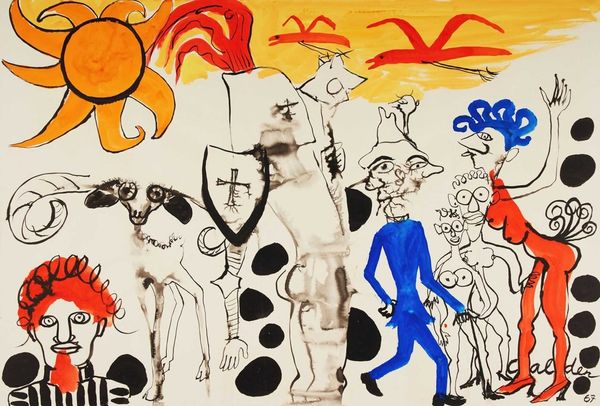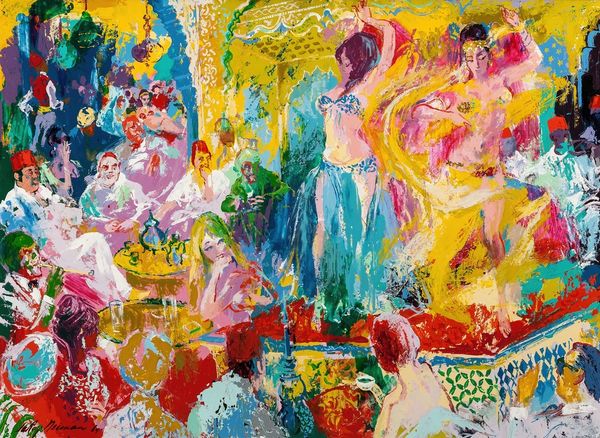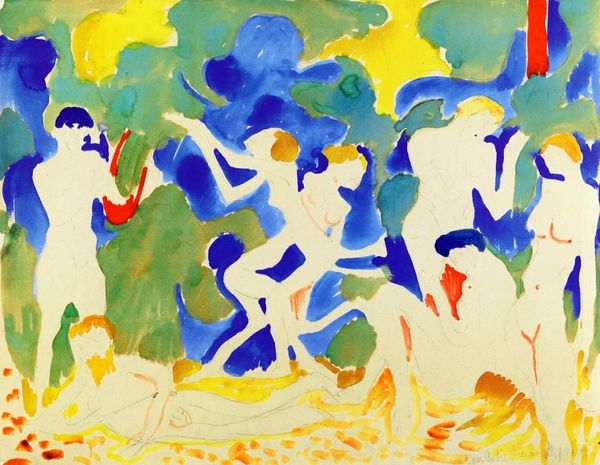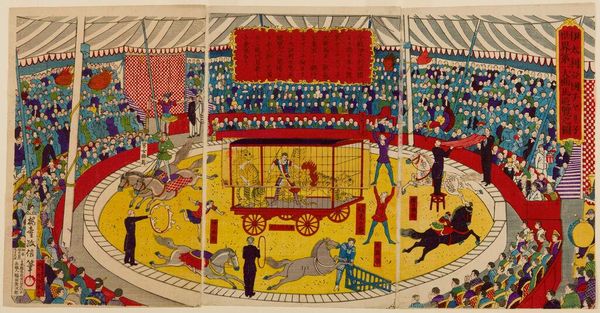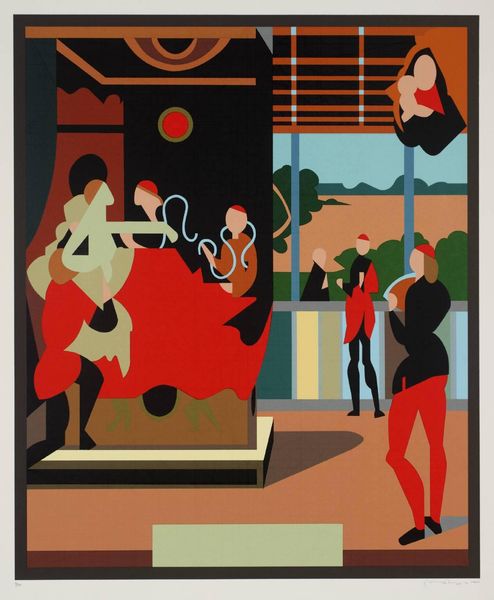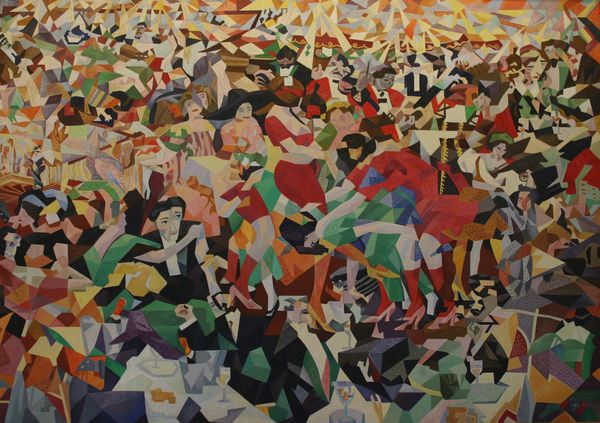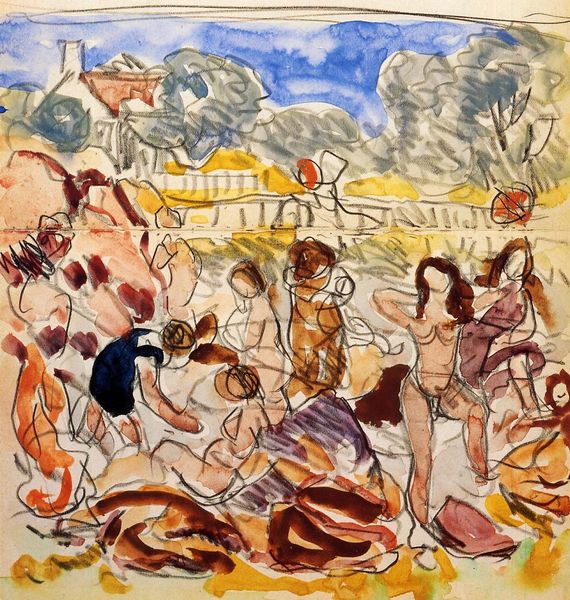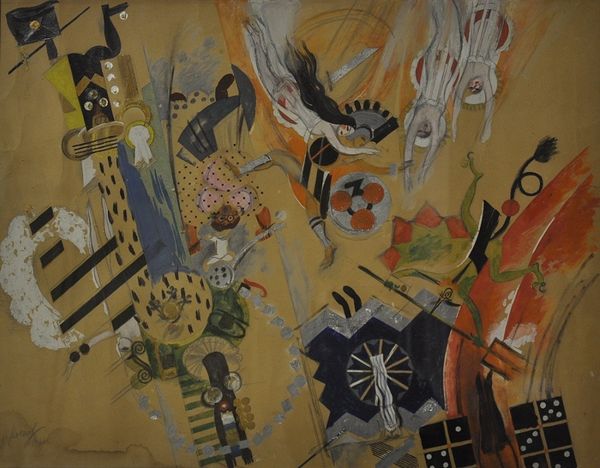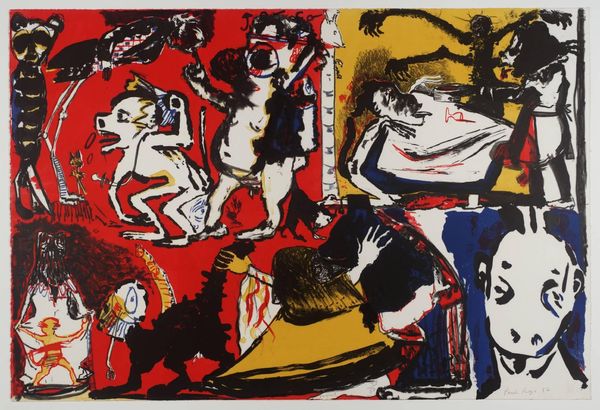
painting, acrylic-paint
#
art-deco
#
water colours
#
painting
#
acrylic-paint
#
figuration
#
ashcan-school
#
cityscape
#
painting art
#
watercolor
Copyright: Public domain
Editor: Here we have Florine Stettheimer's "Ashbury Park South," created around 1920, using, it seems, acrylic paint and watercolors. It depicts a beach scene, and what immediately strikes me is the diversity of people represented. What draws your eye when you look at this piece? Curator: What grabs me is how Stettheimer represents leisure. It’s not just an idyllic scene; it's a commentary on consumption and class. Consider the sheer variety of figures and their activities: acrobats, sunbathers, socialites being wheeled around, vendors - it all indicates a thriving culture around the commodification of "fun." Editor: So you’re saying the artist is purposefully showing all these different economic layers interacting in the same physical space? Curator: Exactly. Notice the stylistic choices; the flatness, the almost cartoonish figures. It flattens social distinctions somewhat, turning everyone into performers in this spectacle of modern life. The medium is critical too; watercolor allows for layering and fluidity. She's not just recording a scene, she's actively constructing a world where material comforts and social roles are on full display, and thus able to be seen critically. What does the beach *produce* beyond enjoyment? Editor: That's a perspective I hadn’t considered! The beach isn't just a space, but an industry. The making of leisure as work and a form of spectacle for the consumer is powerful, the way it also references theater with its shallow stage. Curator: Precisely. And those figures, stylized almost like porcelain dolls, speak to the commodification of the body itself in this setting. She doesn't celebrate beauty, she seems more interested in pointing out how even beauty can be fabricated. Editor: I guess looking at it through a material lens like that gives the piece an interesting twist, from carefree day at the beach to… capitalism on canvas. Thanks for making it clearer to see those relationships. Curator: You’re welcome! It just goes to show how even seemingly innocent subjects can reveal much deeper societal mechanisms when we examine the materials and means of their depiction.
Comments
No comments
Be the first to comment and join the conversation on the ultimate creative platform.
